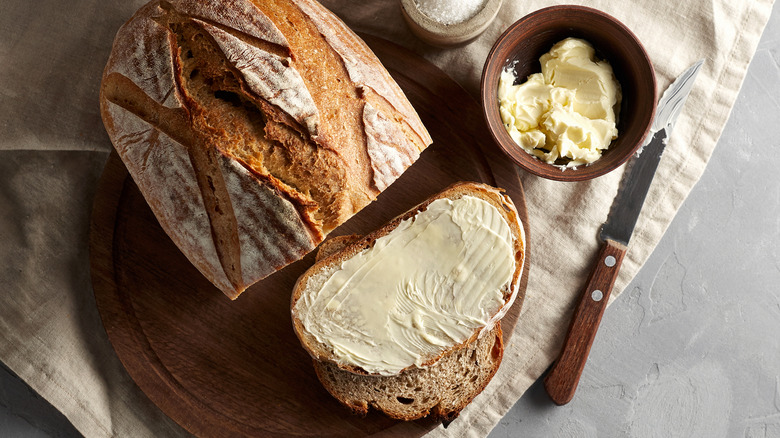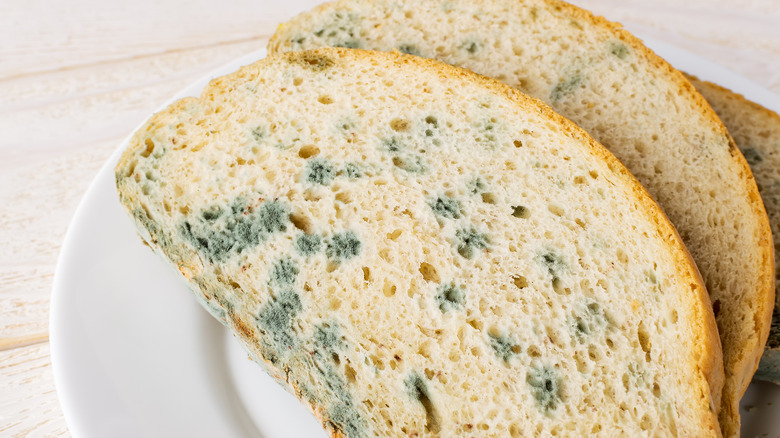Is It Safe To Eat Moldy Bread?
We've all been there: You're two-thirds of the way through a loaf of bread when you suddenly spot a fuzzy patch of mold. Should you throw the whole thing out, or merely cut off the offending piece and continue with your morning toast?
According to NPR, when it comes to moldy bread, it's better to be safe than sorry. "We don't recommend cutting mold off of bread, because it's a soft food," explained USDA's Marianne Gravely to the news outlet. In addition to the visible spores on the surface, mold consists of "a network of microscopic roots" too small for us to see. In soft foods, like bread, it is far easier for these roots to permeate the whole thing — even if the mold appears to be localized only in one area. As such, it's advised to simply discard the moldy loaf entirely.
Healthline echoes this advice. While there certainly are some molds that are safe for consumption (think: blue cheese), most of us aren't experts in mold or know enough to recognize which is growing on our bread. Again, as the USDA says, proper handling of bread, or any baked goods for that matter, with mold is to throw them out, as "porous foods can be contaminated below the surface."
How to make bread last longer
Uneaten bread will likely grow moldy at one point or another, but there are methods that can help delay this spoiling process — namely, freezing fresh bread before it's had the chance to go bad. According to Epicurious, freezing slows down staling, and any fresh bread stored in the freezer in a zip-top bag can last two to three months.
Tablespoon, meanwhile, says that simply storing bread in the fridge is enough to substantially increase its shelf-life. This said, the temperature of a refrigerator will help dry bread out faster (due to a recrystallization of the starch, per Serious Eats) so while this is a solution to stave off moldy bread in the short term, the freezer remains the better option for bread overall.
Finally, if you're hoping to leave your bread out at room temperature, Insider suggests either investing in a breadbox, wrapping the loaf in plastic, or storing it in an airtight reusable container. In any case, it's best to choose "cool, dry areas" for bread storage as these are less likely to promote mold growth.

